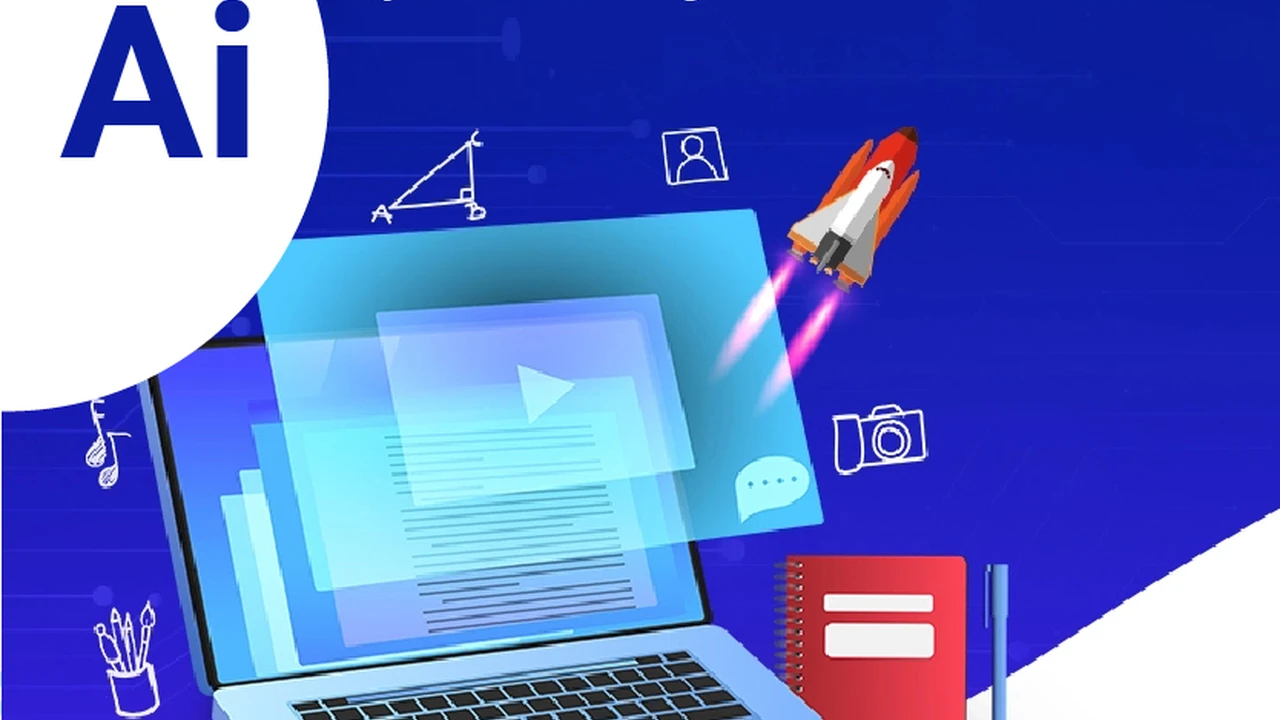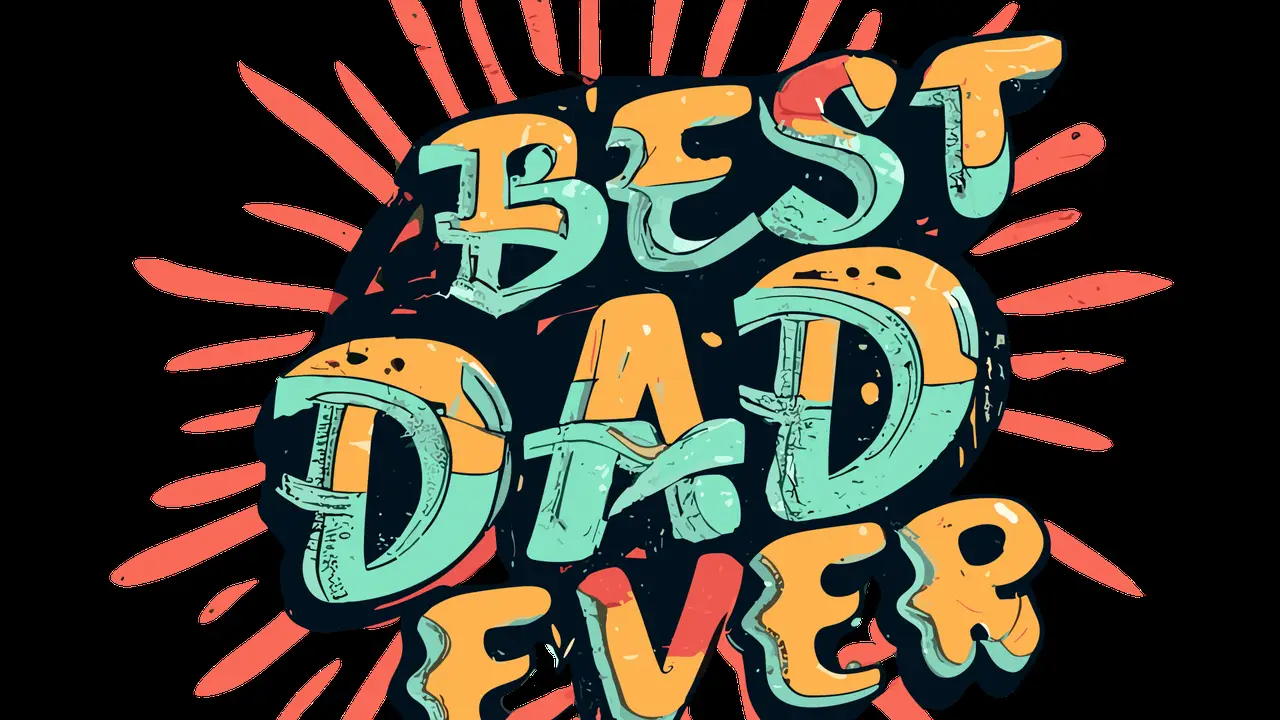Adaptive Learning Systems Tailoring Education to Every Student
Understand adaptive learning systems. Tailor education to every student's unique pace and style for better outcomes.

Understand adaptive learning systems. Tailor education to every student's unique pace and style for better outcomes.
Adaptive Learning Systems Tailoring Education to Every Student
Hey there, future-proof learners and educators! Ever felt like a square peg in a round hole when it comes to traditional education? You know, sitting through lectures on topics you already grasp, or conversely, feeling completely lost while everyone else seems to get it? Well, you're not alone. The one-size-fits-all approach to learning is slowly but surely becoming a relic of the past, thanks to the incredible advancements in adaptive learning systems. These aren't just fancy new apps; they're a fundamental shift in how we approach education, making it truly personal and effective for every single student.
Imagine a learning experience that literally adapts to you. It knows what you know, what you don't know, how you learn best, and even when you're most likely to forget something. That's the magic of adaptive learning. It's like having a super-smart, infinitely patient tutor who's always by your side, guiding you through your educational journey at precisely the right pace and with the right content. This isn't just about making learning easier; it's about making it more efficient, more engaging, and ultimately, more successful.
In this deep dive, we're going to unpack everything about adaptive learning systems. We'll explore what they are, how they work, why they're such a game-changer, and even look at some of the leading platforms out there that are making this personalized learning dream a reality. So, buckle up, because your understanding of education is about to get a serious upgrade!
What are Adaptive Learning Systems Personalized Education Explained
At its core, an adaptive learning system is an educational technology that modifies the presentation of educational material in response to a student's performance. Think of it as a dynamic feedback loop. Instead of a static textbook or a fixed curriculum, the system continuously assesses your progress, identifies your strengths and weaknesses, and then adjusts the learning path, content, and even the difficulty level to match your individual needs. It's all about providing a truly personalized learning experience.
This personalization isn't just about showing you different content. It can involve a whole host of adjustments:
- Content Sequencing: If you ace a pre-assessment on a topic, the system might skip you ahead to more advanced material. If you struggle, it might provide remedial content or different explanations.
- Pacing: Some students learn quickly, others need more time. Adaptive systems allow you to move at your own speed, ensuring mastery before progressing.
- Learning Styles: Some people are visual learners, others prefer auditory or kinesthetic approaches. While still evolving, some adaptive systems try to offer content in various formats to cater to these preferences.
- Feedback and Support: Instead of generic feedback, adaptive systems can provide targeted hints, explanations, and resources based on your specific errors.
- Intervention: If a student is consistently struggling, the system can flag this for an instructor or provide additional support mechanisms.
The goal is to keep you in that sweet spot of learning – not too easy that you get bored, and not so hard that you get frustrated. It's about optimizing the learning process for maximum engagement and retention.
How Adaptive Learning Works The Technology Behind Personalized Paths
So, how do these systems actually pull off this educational wizardry? It's a combination of clever algorithms, data analysis, and often, a touch of artificial intelligence. Here's a simplified breakdown of the typical process:
- Initial Assessment: When you first start, the system often gives you a diagnostic test or a series of questions to gauge your current knowledge level in a particular subject. This helps establish a baseline.
- Content Delivery: Based on your assessment, the system presents you with learning material. This could be videos, readings, interactive exercises, simulations, or a mix of everything.
- Continuous Assessment and Data Collection: As you interact with the content, the system is constantly collecting data. It tracks your answers, how long you spend on tasks, your accuracy, the types of errors you make, and even your engagement levels.
- Algorithm-Driven Adaptation: This is where the magic happens. Sophisticated algorithms analyze all that data in real-time. If you answer correctly, it might move you forward. If you struggle, it might offer a different explanation, a simpler problem, or suggest reviewing a prerequisite topic. Some systems even use machine learning to predict where you might struggle next.
- Personalized Feedback and Recommendations: Instead of just telling you 'wrong answer,' the system can explain why it was wrong, provide hints, or recommend specific resources to help you understand the concept better.
- Iterative Process: This cycle of assess, deliver, collect data, adapt, and feedback continues throughout your entire learning journey, constantly refining your personalized path.
Think of it like a GPS for your learning. It knows your destination (mastery of a subject), your starting point (your current knowledge), and it continuously recalculates the best route based on traffic (your performance) and road conditions (your learning style).
Benefits of Adaptive Learning Systems Enhanced Engagement and Outcomes
The advantages of adaptive learning are pretty compelling, both for students and educators. It's not just a nice-to-have; it's a powerful tool for improving educational outcomes.
For Students Maximizing Learning Potential
- Increased Engagement: When learning is tailored to your needs, it's naturally more engaging. You're not bored by what you already know, nor overwhelmed by what you don't. This keeps motivation high.
- Improved Retention: By focusing on areas of weakness and providing timely review, adaptive systems help solidify understanding and improve long-term memory retention.
- Greater Efficiency: No wasted time on redundant material. Students can progress through content at their optimal pace, potentially learning more in less time.
- Reduced Frustration: The constant support and personalized adjustments mean fewer moments of feeling lost or giving up.
- Empowerment: Students take more ownership of their learning when they see a clear, personalized path to success.
For Educators Streamlining Instruction and Insight
- Differentiated Instruction at Scale: Teachers can effectively differentiate instruction for an entire classroom of diverse learners, something that's incredibly challenging in a traditional setting.
- Valuable Data Insights: Adaptive systems provide rich analytics on student performance, highlighting common misconceptions, areas where students excel, and individual struggles. This data is gold for informing teaching strategies.
- Focus on Higher-Order Thinking: By automating the delivery of foundational content and basic assessments, teachers can free up time to focus on more complex discussions, project-based learning, and one-on-one support.
- Early Intervention: The systems can flag students who are falling behind early on, allowing educators to intervene before problems become too significant.
- Resource Optimization: Educators can see which resources are most effective and where students are spending their time, helping them refine course materials.
Leading Adaptive Learning Platforms Products and Use Cases
Now, let's get down to some specifics. The market for adaptive learning systems is growing rapidly, with various platforms catering to different educational levels and subject areas. Here are a few prominent examples, along with their typical use cases and pricing models:
1. Knewton Alta Personalized College Learning
Product Overview: Knewton Alta is a powerful adaptive learning platform primarily used in higher education. It's designed to provide personalized learning experiences for college-level courses, particularly in subjects like mathematics, economics, chemistry, and statistics. Alta uses sophisticated algorithms to continuously assess student proficiency and adapt the learning path, offering targeted instruction and practice problems.
Key Features:
- Continuous Adaptive Learning: Adjusts content and difficulty based on real-time performance.
- Mastery-Based Learning: Students must demonstrate mastery of a topic before moving on.
- Detailed Analytics: Provides instructors with deep insights into student progress and areas of struggle.
- Integration with LMS: Seamlessly integrates with popular Learning Management Systems like Canvas, Blackboard, and Moodle.
- Affordable for Students: Often more cost-effective than traditional textbooks and homework platforms.
Use Cases:
- College-level courses: Ideal for large introductory courses where students come with varying levels of preparation.
- Remedial education: Helps students catch up on foundational skills.
- Flipped classrooms: Students can learn core concepts at their own pace before class, freeing up class time for discussion and problem-solving.
Pricing: Knewton Alta is typically priced per student per course, often ranging from $40 to $80 USD for a single course access for a semester. This is usually a one-time purchase for the duration of the course. They also offer institutional pricing for broader adoption.
2. DreamBox Learning K-8 Math and Reading
Product Overview: DreamBox Learning is a highly regarded adaptive learning platform specifically designed for K-8 mathematics and reading. It uses intelligent adaptive technology to deliver a personalized curriculum that adjusts in real-time to each student's unique learning style and pace. DreamBox aims to build conceptual understanding and fluency through engaging, game-like activities.
Key Features:
- Intelligent Adaptive Engine: Over 180,000 unique learning paths for math and reading.
- Engaging Interface: Uses interactive tools and virtual manipulatives to make learning fun.
- Teacher Dashboard: Provides educators with actionable data on student progress and areas needing support.
- Bilingual Support: Available in English and Spanish.
- Focus on Conceptual Understanding: Goes beyond rote memorization to build deep understanding.
Use Cases:
- Elementary and Middle School Classrooms: Supplements core instruction and provides differentiated practice.
- Intervention Programs: Supports students who are struggling in math or reading.
- Homeschooling: Provides a structured and personalized curriculum for home learners.
- Summer Learning: Helps prevent summer slide and reinforces skills.
Pricing: DreamBox Learning is primarily sold to schools and districts, with pricing varying based on the number of students and the specific modules (math, reading, or both). For individual families, subscriptions are available, typically around $12.95 to $19.95 USD per month per student, with discounts for annual subscriptions (e.g., $129.95 to $199.95 USD per year). They often offer free trials.
3. ALEKS Assessment and Learning in Knowledge Spaces
Product Overview: ALEKS, from McGraw Hill, is another prominent adaptive learning system, particularly strong in K-12 and higher education mathematics, chemistry, statistics, and business. ALEKS uses an artificial intelligence engine to precisely determine what a student knows and doesn't know, and then delivers highly targeted instruction and practice problems. It's known for its mastery-based approach and detailed knowledge checks.
Key Features:
- AI-Powered Assessment: Pinpoints exact knowledge gaps and strengths.
- Personalized Learning Path: Focuses students only on the topics they are ready to learn.
- Mastery-Based Progression: Ensures students achieve proficiency before moving forward.
- Comprehensive Reporting: Provides instructors with detailed reports on student and class progress.
- No Multiple Choice: Uses open-response questions to ensure true understanding.
Use Cases:
- Mathematics Courses (Algebra, Calculus, Statistics): Widely used from middle school through college.
- Chemistry and other STEM subjects: Effective for building foundational knowledge.
- Placement Testing: Helps institutions accurately place students into appropriate courses.
- Test Preparation: Can be used for standardized test prep by identifying and addressing weak areas.
Pricing: Similar to Knewton Alta, ALEKS is often sold as a course access code. Prices for students typically range from $30 to $100 USD per course for a semester or year, depending on the subject and institution. Institutional licenses are also available.
4. Smart Sparrow Adaptive Learning Authoring Platform
Product Overview: Smart Sparrow (now part of Pearson's Revel platform) is slightly different in that it's an authoring platform that allows educators and instructional designers to create their own adaptive learning experiences. While the previous examples are off-the-shelf solutions, Smart Sparrow empowers institutions to build highly customized adaptive tutorials and courses tailored to their specific curriculum and pedagogical approaches. It uses a visual authoring tool to design complex adaptive pathways.
Key Features:
- Visual Authoring Tool: Drag-and-drop interface for creating adaptive content.
- Rich Analytics: Provides data on how students interact with the custom-built content.
- Scenario-Based Learning: Excellent for creating simulations and problem-solving scenarios.
- Personalized Feedback Engine: Allows for highly specific feedback based on student responses.
- Integration Capabilities: Can integrate with existing LMS platforms.
Use Cases:
- Universities and Colleges: For faculty to develop bespoke adaptive modules for their courses.
- Corporate Training: To create personalized training programs for employees.
- Medical Education: For developing interactive clinical simulations.
- Any institution wanting highly customized adaptive content: Where off-the-shelf solutions don't quite fit.
Pricing: As an authoring platform, Smart Sparrow's pricing is typically institutional, based on licenses for creators and the number of students accessing the content. It's not usually sold directly to individual students. Pricing would be negotiated directly with Pearson and can vary significantly based on the scale of deployment. For individual educators or small teams, access might be bundled with other Pearson products or require a specific institutional agreement.
5. Century Tech AI Powered Learning for K-12 and FE
Product Overview: Century Tech is an AI-powered adaptive learning platform primarily used in K-12 (primary and secondary) and Further Education (FE) in the UK and increasingly globally. It uses artificial intelligence and neuroscience to create personalized learning pathways for students, identify gaps in knowledge, and recommend resources. It also aims to reduce teacher workload by automating assessment and providing insights.
Key Features:
- AI-Driven Diagnostics: Identifies student strengths, weaknesses, and misconceptions.
- Personalized Micro-Lessons: Delivers bite-sized learning modules tailored to individual needs.
- Neuroscience-Informed Design: Incorporates principles of cognitive science for effective learning.
- Teacher Dashboard and Analytics: Provides real-time data on student progress and engagement.
- Curriculum Alignment: Content is aligned with national curricula (e.g., UK, US, international).
Use Cases:
- Primary and Secondary Schools: Supports core subjects like English, Math, and Science.
- Further Education Colleges: Helps students prepare for exams and bridge knowledge gaps.
- Catch-up and Intervention: Provides targeted support for struggling learners.
- Homework and Revision: Offers personalized practice and review.
Pricing: Century Tech is primarily sold to schools and educational institutions. Pricing is typically based on the number of students and the duration of the license. Individual student or family subscriptions are not commonly offered directly, but access would be provided through a school's subscription. Schools would negotiate pricing directly with Century Tech, which can range from a few thousand to tens of thousands of USD annually depending on the size of the school and the scope of implementation.
Challenges and Considerations Implementing Adaptive Learning
While adaptive learning systems offer immense potential, they're not a magic bullet. There are several challenges and considerations that educators and institutions need to keep in mind when implementing them.
Data Privacy and Security Protecting Student Information
Adaptive systems collect a vast amount of data on student performance and behavior. This raises critical questions about data privacy and security. Institutions must ensure that platforms comply with relevant regulations (like GDPR or FERPA) and that student data is protected from breaches and misuse. Transparency with students and parents about what data is collected and how it's used is paramount.
Teacher Training and Integration Empowering Educators
Adaptive learning isn't about replacing teachers; it's about empowering them. However, this requires significant training. Educators need to understand how to use these systems effectively, interpret the data they provide, and integrate them seamlessly into their pedagogical practices. It's a shift from being the sole deliverer of content to becoming a facilitator and guide.
Content Quality and Alignment Ensuring Educational Value
The effectiveness of an adaptive system is only as good as the content it delivers. Institutions need to carefully vet the quality of the educational material, ensuring it's accurate, engaging, and aligned with their curriculum goals. For authoring platforms, the responsibility falls on the creators to develop high-quality adaptive content.
Cost and Accessibility Bridging the Digital Divide
While some platforms are becoming more affordable, the initial investment in adaptive learning systems can still be substantial for schools and districts. Furthermore, equitable access to technology (devices, reliable internet) remains a challenge, especially in underserved communities. Ensuring that these advanced tools don't exacerbate the digital divide is a crucial consideration.
Over-Reliance and Critical Thinking Balancing Technology and Pedagogy
There's a risk that students might become overly reliant on the system's guidance, potentially hindering the development of independent problem-solving and critical thinking skills. Educators need to design learning experiences that balance the personalized support of adaptive systems with opportunities for students to grapple with challenges, collaborate, and think critically without constant algorithmic intervention.
The Future of Personalized Education Innovations on the Horizon
The field of adaptive learning is still evolving at a rapid pace. We're seeing exciting innovations that promise to make personalized education even more sophisticated and effective.
AI and Machine Learning Deeper Personalization
As AI and machine learning continue to advance, adaptive systems will become even better at understanding individual learners. Expect more nuanced predictions about learning difficulties, more sophisticated recommendations for content, and even AI tutors that can engage in natural language conversations to provide support.
Neuroscience Integration Understanding the Brain
Researchers are increasingly looking at how insights from neuroscience can inform adaptive learning design. Understanding how the brain learns, remembers, and forgets can lead to systems that optimize content delivery and review schedules for maximum retention and understanding.
Virtual and Augmented Reality Immersive Adaptive Experiences
Imagine an adaptive system that not only tailors content but also delivers it within an immersive VR or AR environment. This could revolutionize subjects like science (virtual labs), history (experiencing historical events), or even vocational training, making learning incredibly engaging and experiential.
Competency-Based Education Mastery Over Time
Adaptive learning is a natural fit for competency-based education (CBE), where students progress based on demonstrated mastery of skills rather than seat time. As CBE gains traction, adaptive systems will play an even more central role in assessing competencies and guiding students toward proficiency.
So, there you have it! Adaptive learning systems are truly transforming the educational landscape, moving us closer to a future where every student can receive an education perfectly tailored to their unique needs. It's an exciting time to be a learner, and an even more exciting time to be an educator leveraging these powerful tools. Keep learning, keep growing, and embrace the personalized path ahead!
:max_bytes(150000):strip_icc()/277019-baked-pork-chops-with-cream-of-mushroom-soup-DDMFS-beauty-4x3-BG-7505-5762b731cf30447d9cbbbbbf387beafa.jpg)






